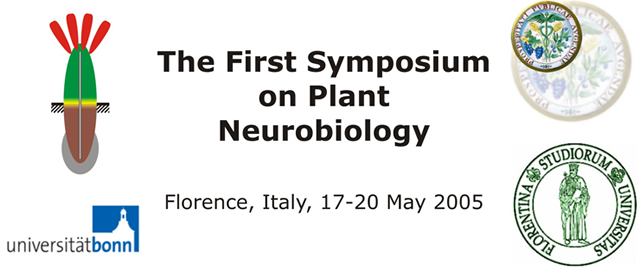|
Plant/plant
communication via volatiles, allelopathy, may have profound effects on development of exposed plant
individuals (1). Hypothetically these responses affect insects adapted to living on and/or around these
plants. To identify effects of plant-plant communication via volatiles on different trophical levels we have
used a model system consisting of different barley cultivars and two common weeds, an aphid pest,
Rhopalosiphum padi (L.), and an aphid predator, ladybird, Coccinella septempunctata (L.).
Plant-plant communication mediated by volatile messenger substances significantly affect plant leaf
temperature (2) and biomass allocation (3) but not relative growth rate and total biomass. Significant changes
in leaf temperature and biomass allocation of exposed plants to allelobiotic volatilise show that the
allelopathic effect was systemic. Barley plants exposed to volatiles from neighbouring plants were less
readily accepted by aphids when specific cultivars of barley were combined (intra-species) (2; 4) and
between cereals and a number of aggressive weeds (inter-species) (5). Exposure to volatiles from
creeping thistle, Cirsium arvense (L.), also causes barley plants to become more attractive to
ladybird (L.) (6).
For this tritrophic effect of plant/plant communication we suggest the term
allelobiosis defined as the effects of chemical interactions between plants across trophic leaves (7).
Our results support the hypothesise that plant responses to allelobiosis is an adaptation for
coexistence with other which is a basis for follow up effects in higher trophic levels. The positive effect on
polyphagous predators may increase the ecological success of listening” plant stand and, also have
negative effects on herbivore plant acceptance.
- Rice, E. L. 1984.
Allelopathy. Academic press, INC, Oriando, Florida, USA.
- Pettersson, J., Ninkovic, V.
& Ahmed, E. (1999) Acta Agriculture Scandinavica Section B, Plant and Soil, 49, 12-157.
- Ninkovic, V. (2003) Journal of Experimental Botany, 54, 1931-1939.
- Ninkovic, V.,
Olsson, U. & Pettersson, J. (2002) Entomologia Experimentalis at Applicata. 102, 177-182.
- Glinwood, R., Ninkovic, V., Pettersson, J. & Ahmed, E. (2004) Ecological Entomology, 29, 188-195.
- Ninkovic, V. & Pettersson. J. (2003) OIKOS, 100, 65-70.
-
Pettersson, J., Ninkovic, V & Glinwood, R. (2003) BCPC Crop Science and Technology 2003, volume 2,
1135-1144
|

